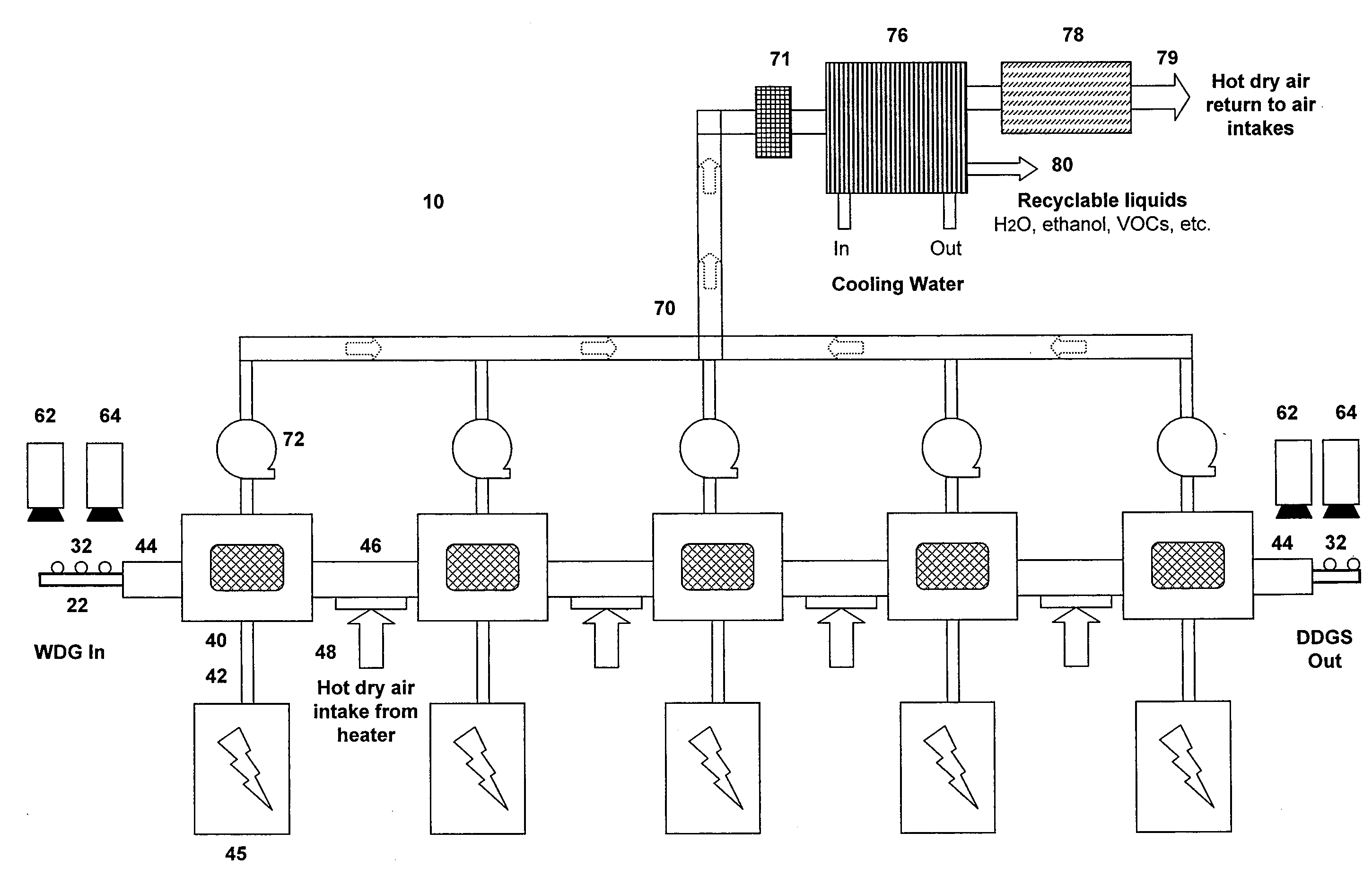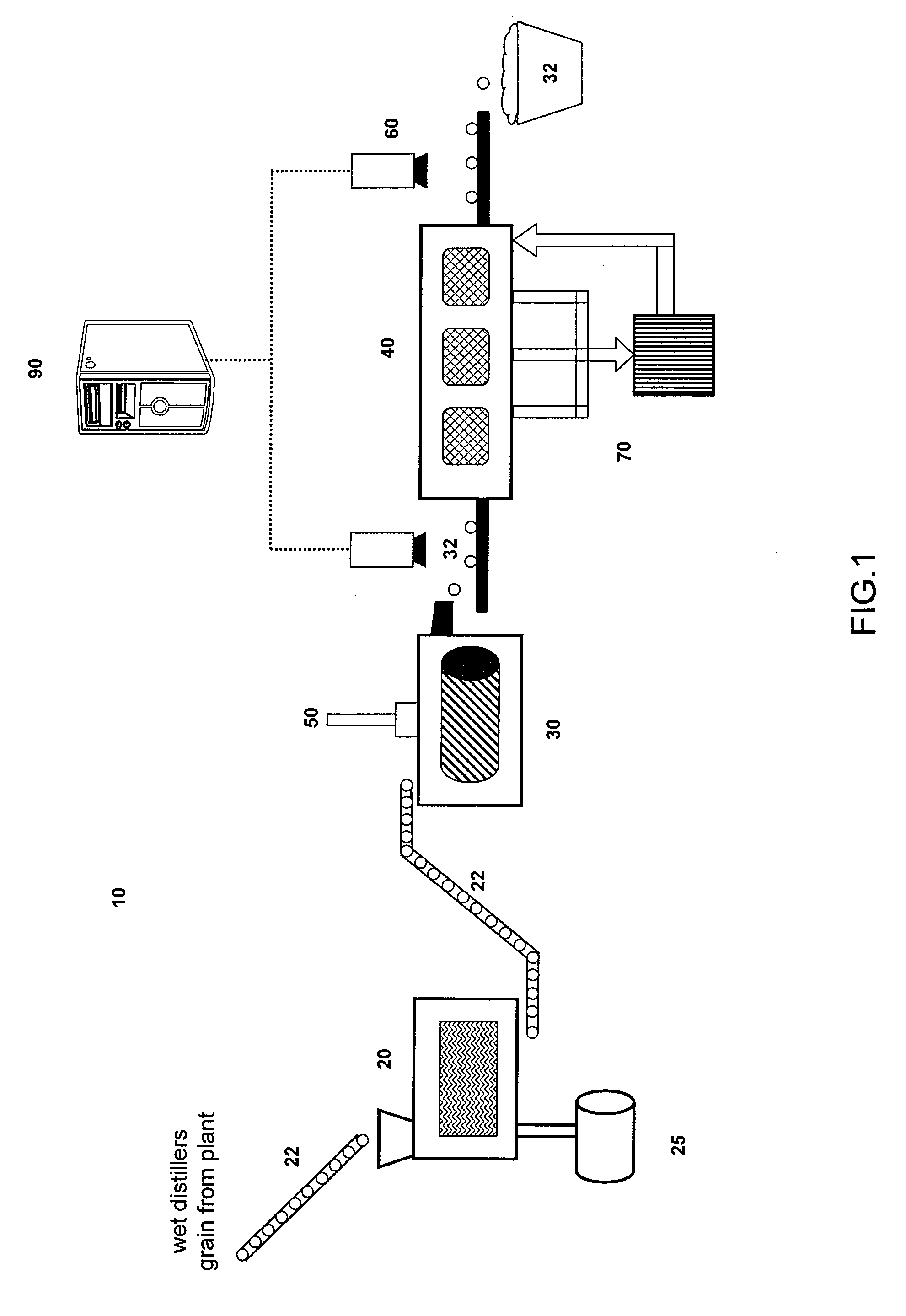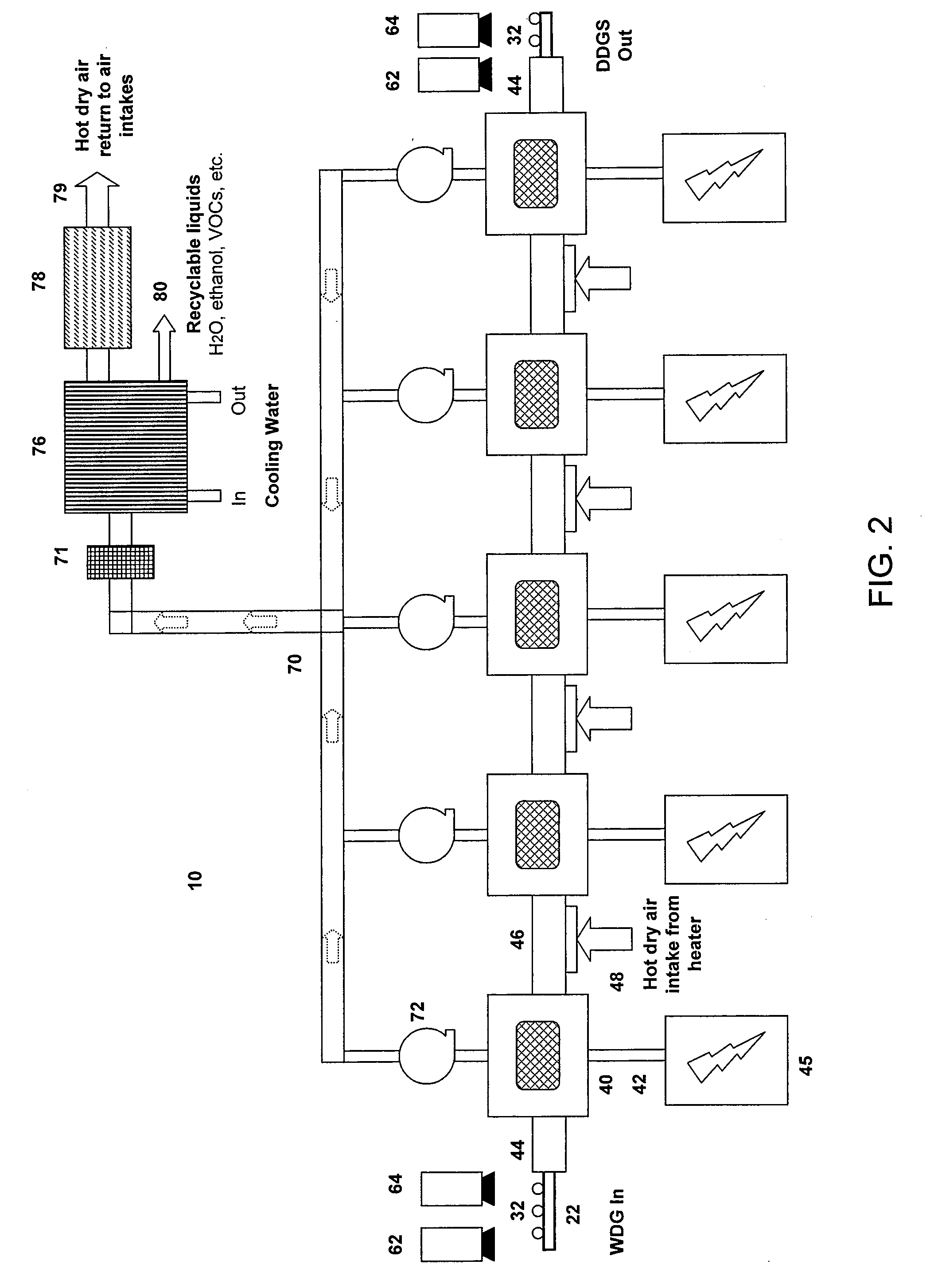Animal Feed Product From Distillers' Grain
a technology of distillers' grain and feed products, which is applied in the field of distillers' grain, can solve the problems of reducing the economic return of ddgs sales, high cost of ddgs drying, and high cost of wet milling, and achieves the effect of saving energy costs for plant operation
- Summary
- Abstract
- Description
- Claims
- Application Information
AI Technical Summary
Benefits of technology
Problems solved by technology
Method used
Image
Examples
example 1
Use of Screw Press Apparatus to Reduce Moisture Content
[0181]The screw press used for an initial study was an “Agri-Press” manufactured by Press Technology, Inc., Springfield, Ohio, having a 6″ diameter screw, a 3:1 pitch ratio and a linear screen having 0.008″ screen spacing. The skilled artisan will realize that other commercially available screw presses may be utilized in a high throughput ethanol plant operation.
[0182]Starting material was 40.7 kg of fresh wet cake obtained from the Pine Lake Corn Processors ethanol plant, Steamboat Rock, Iowa. The wet cake's temperature was 51° C. with a wet basis moisture content of 67.7%. This wet cake was fed into the screw press. The screw speed was set to at 0.8 RPM and an indicated cone pressure was set to 70 PSI. After pressing, the product output was sampled and tested. The output wet basis moisture was tested and determined to be 59.7%, or a reduction of (1−(59.7 / 67.7))=11.8%. The liquid product removed consisted of water, ethanol, cor...
example 2
[0184]An initial study was conducted to confirm the low pressure flowability of wet cake. In order to simulate the operation of a low pressure screw extruder, a 2.5 gallon steel pressure tank with a removable top was modified as follows.
[0185]Using an existing threaded connection on the top cover, a compressed gas input port with a regulator and pressure gauge was fitted.
[0186]A 1 inch hole was punched near the bottom of the tank and a ¾″ NPT brass fitting was brazed in to act as an outlet port.
[0187]A four inch length of ½″ NPT brass pipe was connected to the tank's output port.
[0188]The other end of the output pipe was connected to a side fed machined aluminum 10-port manifold, each port being threaded for 9 mm NPT. A set of brass ⅜″ NPT threaded plugs drilled with ⅛″ orifices were prepared.
[0189]The tank was filled with approximately 2 gallons of cold wet cake and sealed. The tank was then placed on a hot plate until the temperature was approximately 50° C. at the bott...
example 3
Determination of Microwave Power
[0193]A study was conducted to determine the energy required and rate of evaporation of wet cake using a microwave oven.
[0194]The equipment used was a 60 kilowatt capacity industrial microwave oven manufactured by AMTek Microwaves, Inc, Cedar Rapids, Iowa. The oven was equipped with a bottom vent and exhaust blower rated at 250 cubic feet per minute.
[0195]Fresh DDGS wet cake was obtained from a local ethanol plant. The wet cake nominal temperature was 45° C.
[0196]A carefully measured quantity of crumbled wet cake was loaded onto the belt. Additional portions of wet cake were loaded on the belt ahead of and behind the test sample to compensate for the fact that the transmitter automatically ramps power up to and down from a power preset as product enters and exits the oven. The power was applied in a continuous mode.
[0197]The test sample was laid on the belt 30 cm wide, 273 cm long, and about 1 cm thick. The belt speed was 122 cm / minute for all runs. T...
PUM
 Login to View More
Login to View More Abstract
Description
Claims
Application Information
 Login to View More
Login to View More - R&D
- Intellectual Property
- Life Sciences
- Materials
- Tech Scout
- Unparalleled Data Quality
- Higher Quality Content
- 60% Fewer Hallucinations
Browse by: Latest US Patents, China's latest patents, Technical Efficacy Thesaurus, Application Domain, Technology Topic, Popular Technical Reports.
© 2025 PatSnap. All rights reserved.Legal|Privacy policy|Modern Slavery Act Transparency Statement|Sitemap|About US| Contact US: help@patsnap.com



